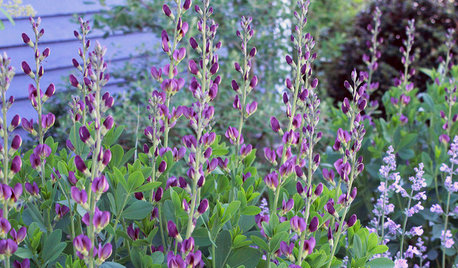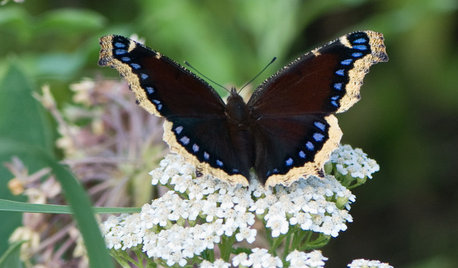Where are the Butterflies?
gracie01 zone5 SW of Chicago
19 years ago
Related Stories

GARDENING FOR BUTTERFLIES7 Native Wildflowers to Make You an Awesome Butterfly Host
Offer the leaves of these and you’ll get more butterflies than with flower nectar alone
Full Story
GARDENING FOR BUTTERFLIESBe a Butterfly Savior — Garden for the Monarchs
Keep hope, beauty and kindness alive in the landscape by providing a refuge for these threatened enchanters
Full Story
HOUZZ TOURSHouzz Tour: Butterfly Roofs Top a Sydney Terrace House
Modern remodel retains 19th century facade while pouring natural light into new and old spaces
Full Story
GARDENING GUIDES6 Plants That Beat Butterfly Bush for the Wildlife Draw
It's invasive, a nonnative and a poor insect magnet. Check out these better alternatives to butterfly bush in the garden
Full Story
GARDENING GUIDES20 Favorite Flowers for Butterflies and Bouquets
Discover perennials and annuals that do double duty as butterfly magnets and versatile cut flowers
Full Story
FALL GARDENINGWhat Monarch Butterflies Taught Me About Garden Design
Thinking like a butterfly leads to fresh perspectives in the garden and in life
Full Story
GARDENING GUIDESGreat Design Plant: Butterfly Milkweed, a Beacon in the Prairie
Vivacious orange flowers for you, nectar for the butterflies and bees. Asclepias tuberosa is worth planting for more reasons than one
Full Story
GARDENING GUIDESMourning Cloak Butterflies Herald Spring
These butterflies feed at tree-sap flows in spring and visit native plant flowers for nectar in early summer
Full Story
GARDENING FOR BUTTERFLIESButterfly Gardening: Delight the Eyes With Living Sculptures
Surprise and thrill with a garden that attracts magical winged creatures, bringing color, movement and life
Full Story
GARDENING GUIDES6 Steps to Creating Your Butterfly Garden
Encourage these fanciful winged beauties to visit your garden while helping restore their fragmented habitat
Full StorySponsored
More Discussions







MICinIA
chicagonative
Related Professionals
Arlington Landscape Architects & Landscape Designers · Matthews Landscape Contractors · Bridgeview Landscape Contractors · Broomfield Landscape Contractors · Clayton Landscape Contractors · Dallas Landscape Contractors · Duarte Landscape Contractors · East Lake-Orient Park Landscape Contractors · East Patchogue Landscape Contractors · Kahului Landscape Contractors · North Canton Landscape Contractors · Pahrump Landscape Contractors · Westchester Landscape Contractors · Aurora Driveway Installation & Maintenance · San Jose Driveway Installation & MaintenanceRoberta_z5
leaveswave
christie_sw_mo
leaveswave
joepyeweed
chicagonative
joepyeweed
juicylucy
piegirl
mrmorton
Minstrel
stan_ia_z4
leaveswave